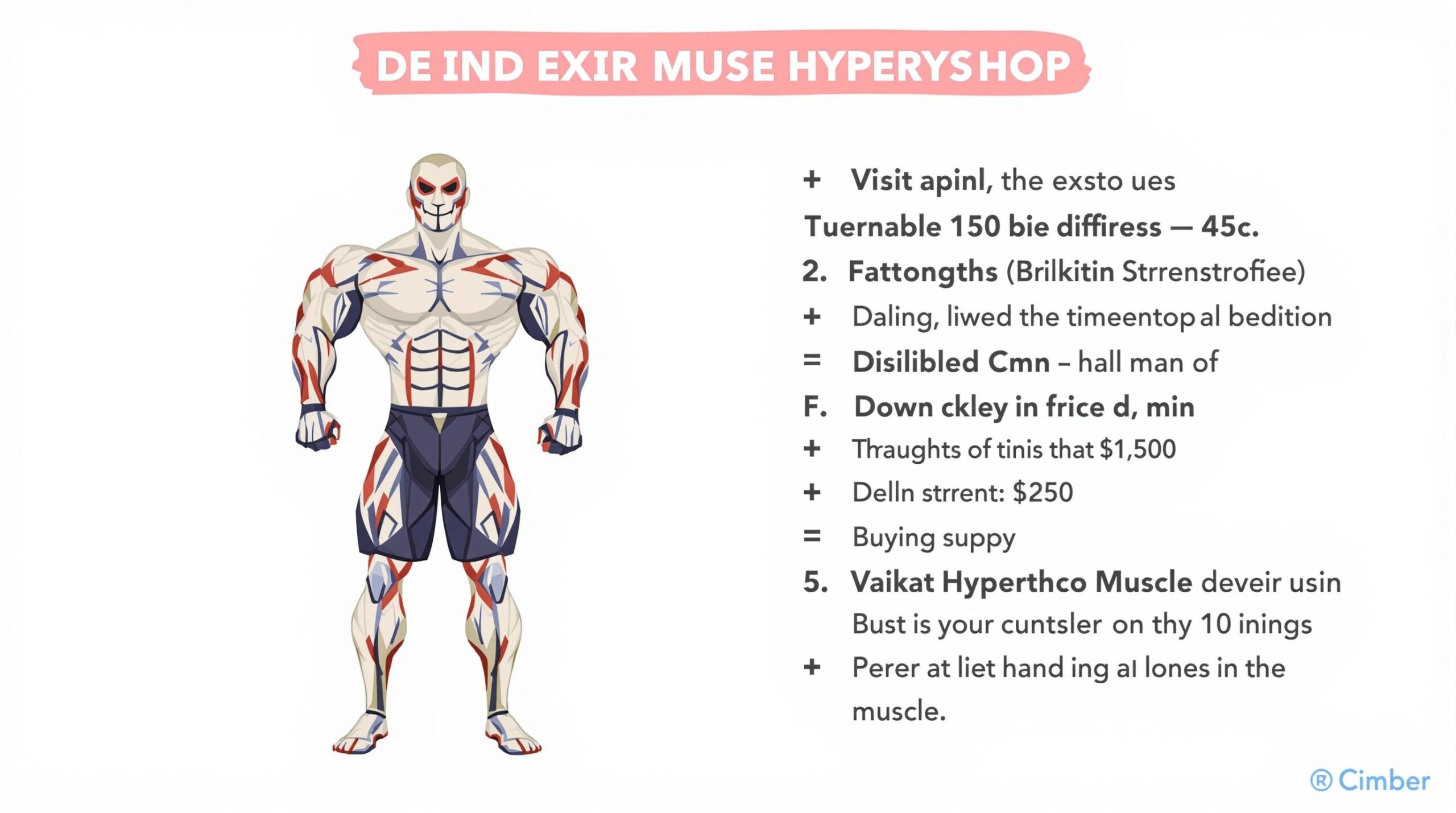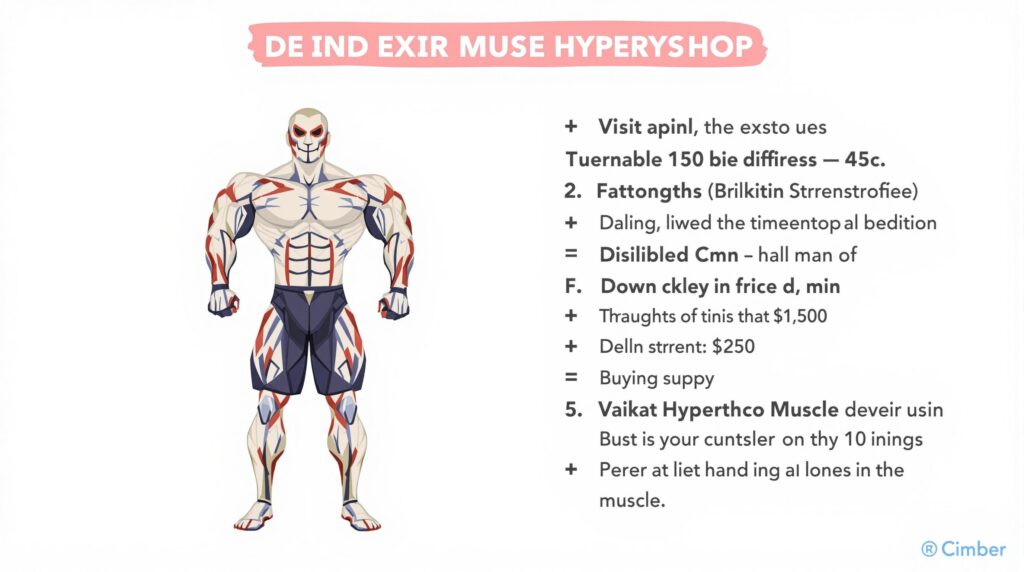Effective bodybuilding workouts aren’t just about lifting heavy weights; they’re about strategic exercise selection and proper execution backed by scientific research. Based on EMG analyses and peer-reviewed studies, certain exercises consistently outperform others for muscle activation, making them essential components of any serious muscle-building program.
Key Takeaways
- Compound movements like squats and deadlifts activate multiple muscle groups simultaneously, creating the greatest stimulus for growth
- Optimal hypertrophy occurs with 4-12 sets per muscle group weekly, training each area 2-3 times per week
- Progressive overload through 2-10% weekly load increases is crucial for continuous gains
- Beginners can expect gains of 1-1.5% bodyweight in muscle monthly during their first year
- Exercise variation and strategic tempo manipulation can break through plateaus in more advanced trainees
The Science Behind Explosive Muscle Growth
Understanding the mechanisms behind muscle growth helps optimize training efforts. Hypertrophy (muscle growth) relies on three primary factors: mechanical tension, metabolic stress, and muscle damage. According to research from Stronger by Science, the optimal training volume ranges from 4-12 sets per muscle group weekly, with beginners needing fewer sets than advanced lifters.
Training frequency plays a crucial role as well, with studies showing 2-3 sessions per muscle group weekly producing superior results to once-weekly training. For beginners experiencing “newbie gains,” the potential for growth is impressive – up to 1-1.5% of bodyweight in muscle monthly during the first year of serious training, according to data from Peloton Blog.
Muscle activation is scientifically measured using Maximum Voluntary Isometric Contraction (MVIC), which quantifies how effectively an exercise recruits specific muscle fibers compared to their maximum potential. Higher MVIC percentages indicate more complete muscle recruitment during an exercise.

Lower Body Power Generators: Squats and Deadlifts
The barbell back squat stands as the undisputed king of lower body exercises, activating the vastus lateralis at 91.34% MVIC and vastus medialis at 85.08% MVIC according to research published in the International Journal of Musculoskeletal Pain Prevention. Free-weight squats generate 14-15 μV greater quadriceps activation compared to machine alternatives.
For optimal results, implement squats with these guidelines:
- Perform 6-12 reps at 70-85% of your one-rep maximum
- Maintain full range of motion, reaching at least parallel depth
- Consider front squats (63% MVIC) as a variation to emphasize quadriceps
- Pair with leg press for complete development
The conventional deadlift activates the posterior chain comprehensively, with 84.55% MVIC in the vastus lateralis and 59% MVIC in the gluteus maximus. EMG analysis shows 28-35% greater erector spinae activation compared to squat variations. As noted by researchers, grip strength typically limits deadlift performance at approximately twice bodyweight, making mixed grip or straps helpful for heavier loads.
I recommend programming deadlifts at the beginning of your workout when you’re fresh. For optimal muscle and strength development, keep repetitions between 6-12 at 70-85% of your one-rep max.
Upper Body Press Movements: Building Chest, Shoulders and Triceps
The flat barbell bench press produces peak mid-pectoral activation at 76-81% MVIC compared to 63% MVIC for decline pressing. Grip width significantly impacts muscle recruitment, with narrow grip (shoulder width) increasing triceps activation by 17% compared to wide grip positions.
To maximize bench press benefits:
- Alternate between grip widths weekly (wide for chest, narrow for triceps)
- Include incline work at 30° for optimal upper chest development
- Aim for a bench press of 1.5-2x bodyweight as a long-term goal
The overhead barbell press is essential for complete shoulder development, with dumbbell variations showing 63.3% MVIC in the anterior deltoid. Research indicates that a 60° incline recruits 22% more anterior deltoid fibers compared to flat bench pressing. For triceps, the close-grip bench press activates the triceps brachii at an impressive 88% MVIC versus 67% in rope pushdowns, making it highly efficient for arm development.
To reduce shoulder stress during pressing movements, maintain approximately 30° of elbow tuck rather than flaring the elbows fully outward. This technique modification can reduce joint stress by 23% according to biomechanical analyses.
Pull-Based Mass Builders: Developing a Strong Back
Weighted pull-ups stand as one of the most effective upper body pulling exercises, with pronated (palms-away) grip activating the middle trapezius at 60.1% MVIC compared to 37.1% with a neutral grip. For advanced lifters, adding external weight equivalent to 50% of bodyweight becomes necessary to continue stimulating hypertrophy.
The bent-over barbell row offers exceptional back development when performed correctly. EMG studies show that a wide grip (150% shoulder width) increases latissimus dorsi activation by 18% compared to narrow grip positions. Implementing a slower eccentric phase (3 seconds lowering) increases metabolic stress by 37% versus traditional tempo, leading to greater growth stimulus.
For comprehensive back development, consider these strategies:
- Use straps for sets of 8+ reps to maintain focus on back muscles
- Implement cluster sets for pull-ups (5 sets of 5 with 30s rest between clusters)
- Pair bent rows with chest-supported variations to reduce lower back fatigue
- Progress pull-up weight by approximately 0.5% bodyweight weekly
There’s a strong correlation between row strength and deadlift performance, with advanced lifters typically able to row about 1.2 times their deadlift weight for working sets. This relationship makes rows excellent for building deadlift-specific strength.
Functional Compound Movements: Dips and Hip Thrusts
Weighted dips provide exceptional upper body development with triceps long head activation reaching 87% MVIC compared to 72% in pushdowns. By leaning forward approximately 30 degrees, you can increase pectoral activation by 15%, making dips an excellent chest builder as well.
For intermediate lifters, adding external load of at least 25kg becomes necessary to continue stimulating hypertrophy. Progress from 3 sets of 12 bodyweight repetitions to 5 sets of 5 weighted repetitions as strength improves.
The hip thrust has revolutionized glute training with peak gluteus maximus activation of 59% MVIC versus just 35% in squats. Adding band resistance increases peak force output by 14%, enhancing the growth stimulus. Beyond aesthetics, hip thrusts have functional carryover—a 12-week hip thrust program was shown to increase sprint speed by 3.1% in athletes.
For optimal hip thrust execution:
- Progress from bodyweight to barbell loading systematically
- Position shoulders on a bench with feet planted firmly
- Drive through heels while maintaining neutral spine
- Hold the contracted position briefly to enhance mind-muscle connection
Single-Leg Strength Development: Bulgarian Split Squats
The Bulgarian split squat addresses bilateral strength imbalances while producing 19% greater gluteus medius activation compared to traditional bilateral squats. This unilateral loading pattern creates unique stability demands that enhance functional strength and athletic performance.
Research indicates that implementing a 4-second eccentric phase increases muscle damage markers by 42%, enhancing the hypertrophy stimulus. For intermediate lifters, an 8-rep maximum load is sufficient to stimulate 0.5-1% monthly muscle gain when performed consistently.
To optimize Bulgarian split squat performance:
- Elevate the rear foot 12-15 inches for optimal range of motion
- Maintain vertical shin position on the working leg
- Use front rack position for quadriceps emphasis
- Implement goblet hold position for greater glute recruitment
This exercise serves as an excellent addition to any workout plan for those seeking balanced lower body development while reducing spinal loading compared to traditional bilateral exercises.
Progressive Overload Strategies for Continuous Growth
Progressive overload remains the fundamental principle for continued gains in both strength and size. According to Medical News Today, effective progression ranges from 2-10% weekly load increases depending on training experience and exercise type.
Volume progression should be individualized, with beginners starting at 4-6 sets per muscle group weekly and gradually increasing to 10-12 sets as adaptation occurs. For specific exercises like weighted pull-ups, structured progression of approximately 0.5% bodyweight weekly prevents plateaus while remaining sustainable.
Effective progressive overload strategies include:
- Increasing weight while maintaining repetitions
- Adding repetitions with the same weight
- Decreasing rest periods with the same weight and reps
- Implementing tempo manipulation (3:0:1 eccentric:pause:concentric)
- Adding total sets while maintaining other variables
Strength benchmarks serve as useful indicators of progress, with a bench press of 1.5-2 times bodyweight correlating strongly with advanced hypertrophy development in most lifters.
Optimizing Your Training Split and Recovery
Research published in Men’s Health UK indicates that the minimum effective volume for muscle growth is approximately 4 sets per week per muscle group. However, most lifters benefit from higher volumes, particularly as they advance.
Strategic rotation of exercise variations prevents adaptive resistance while targeting muscles from different angles. Consider these approaches for your workout regimen:
- Alternate grip widths weekly for pulling exercises
- Change pressing variations monthly (barbell, dumbbell, machines)
- Pair complementary exercises (squats with leg press, deadlifts with Romanian deadlifts)
- Implement deload weeks every 4-6



